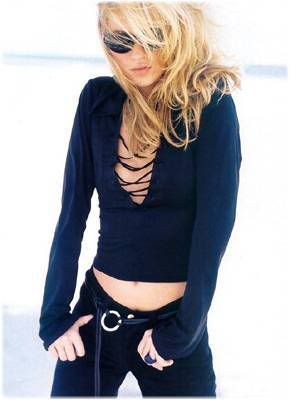From Fashion, Lessons In Regulation
 The common criticism that super-skinny models have an unhealthy influence on young girls is called into question on any trip to the mall, where pudgies clearly prevail over scrawnies, even in health-conscious California.
The common criticism that super-skinny models have an unhealthy influence on young girls is called into question on any trip to the mall, where pudgies clearly prevail over scrawnies, even in health-conscious California.Still, the fashion industry has done a great deal of damage. In fact, I keep a watchful eye on Incredible Daughter #2, who has certainly lost all her baby fat.
Now the U.S. Fashion Council has lept into action, promoting a set of new recommendations that, if followed, would:
- Educate the industry to identify the early warning signs in an individual at risk of developing an eating disorder.
- Models who are identified as having an eating disorder should be required to seek professional help in order to continue modeling. And models who are receiving professional help for an eating disorder should not continue modeling without that professional’s approval.
- Develop workshops for the industry (including models and their families) on the nature of eating disorders, how they arise, how we identify and treat them, and complications if they are untreated.
- Support the well-being of younger individuals by not hiring models under the age of sixteen for runway shows; not allowing models under the age of eighteen to work past midnight at fittings or shoots; and providing regular breaks and rest.
- Supply healthy meals, snacks, and water backstage and at shoots and provide nutrition and fitness education.
- Promote a healthy backstage environment by raising the awareness of the impact of smoking and tobacco-related disease among women, ensuring a smoke-free environment, and address underage drinking by prohibiting alcohol.
But I like the idea of a smoke-free, alcohol-free work environment for models. It's not appropriate for an industry that hires so many young people to encourage and support smoking and drinking.
Health advocates wail that these are merely recommendations, not regulations. The Fashion Council counters, "You're going to be able to get more people involved in helping out by educating and teaching versus enforcing a ban," according to WSJ.
That phraseology is what we in the PR profession knowingly refer to as a "lie." Philosophically, I'm with them though, since I'm no fan of over-regulation of business. When consumers of fashion start protesting by punishing with their pocketbooks the purveyors of bolemia and anorexia, the industry will quickly regulate itself and Kate Moss will pack on the pounds.
Until then, go ahead and print the pamphlets. the models can eat them as low-cal filler.
Related Tags: Fashion, Anorexia, Bolemia, Kate Moss, Regulation




<< Home